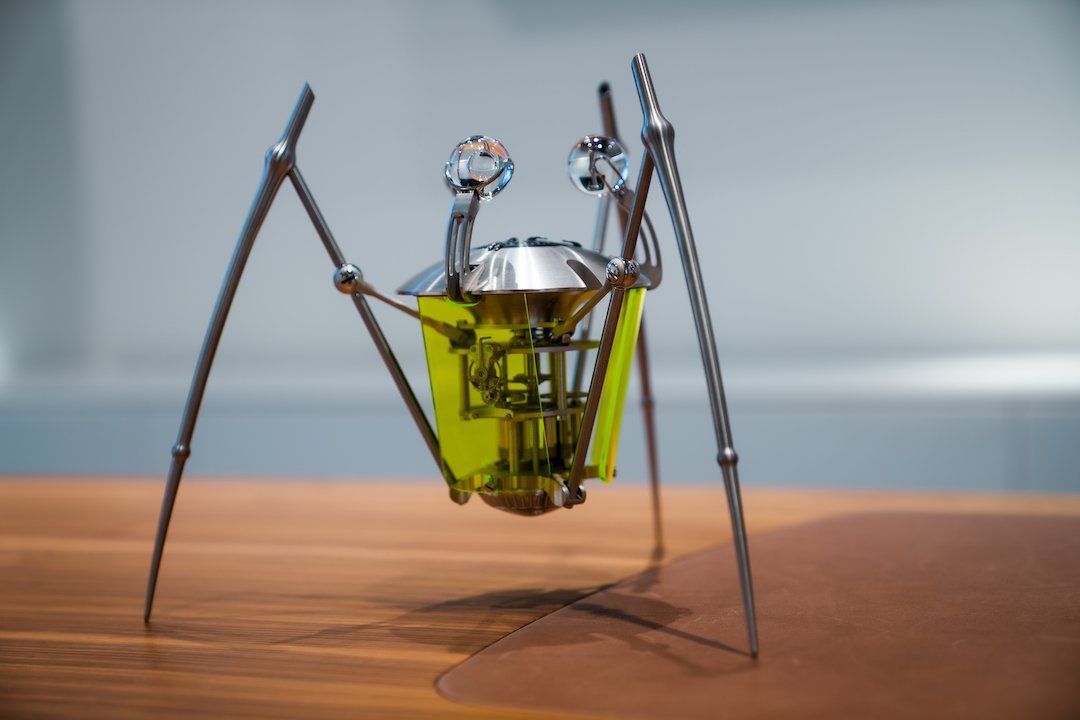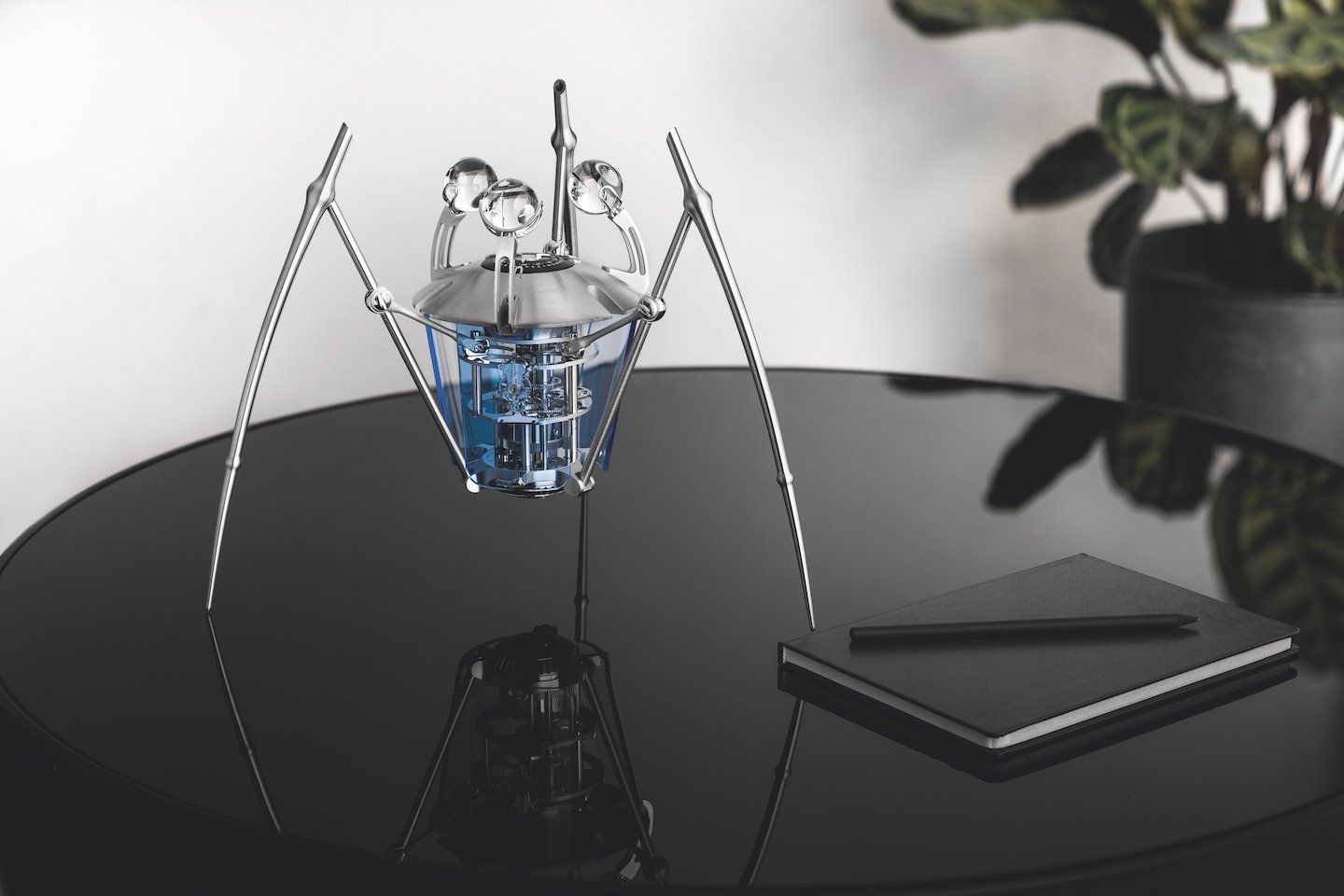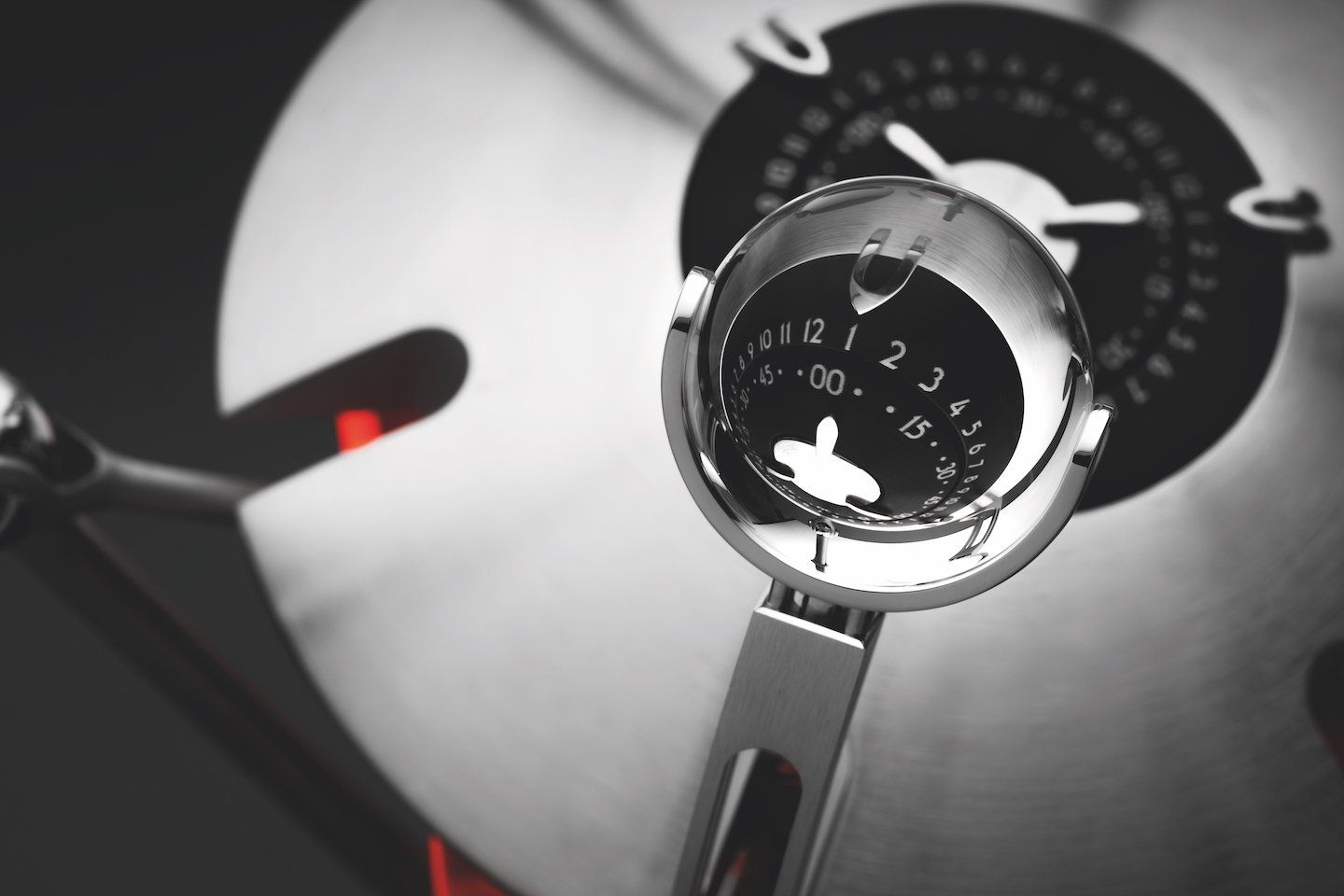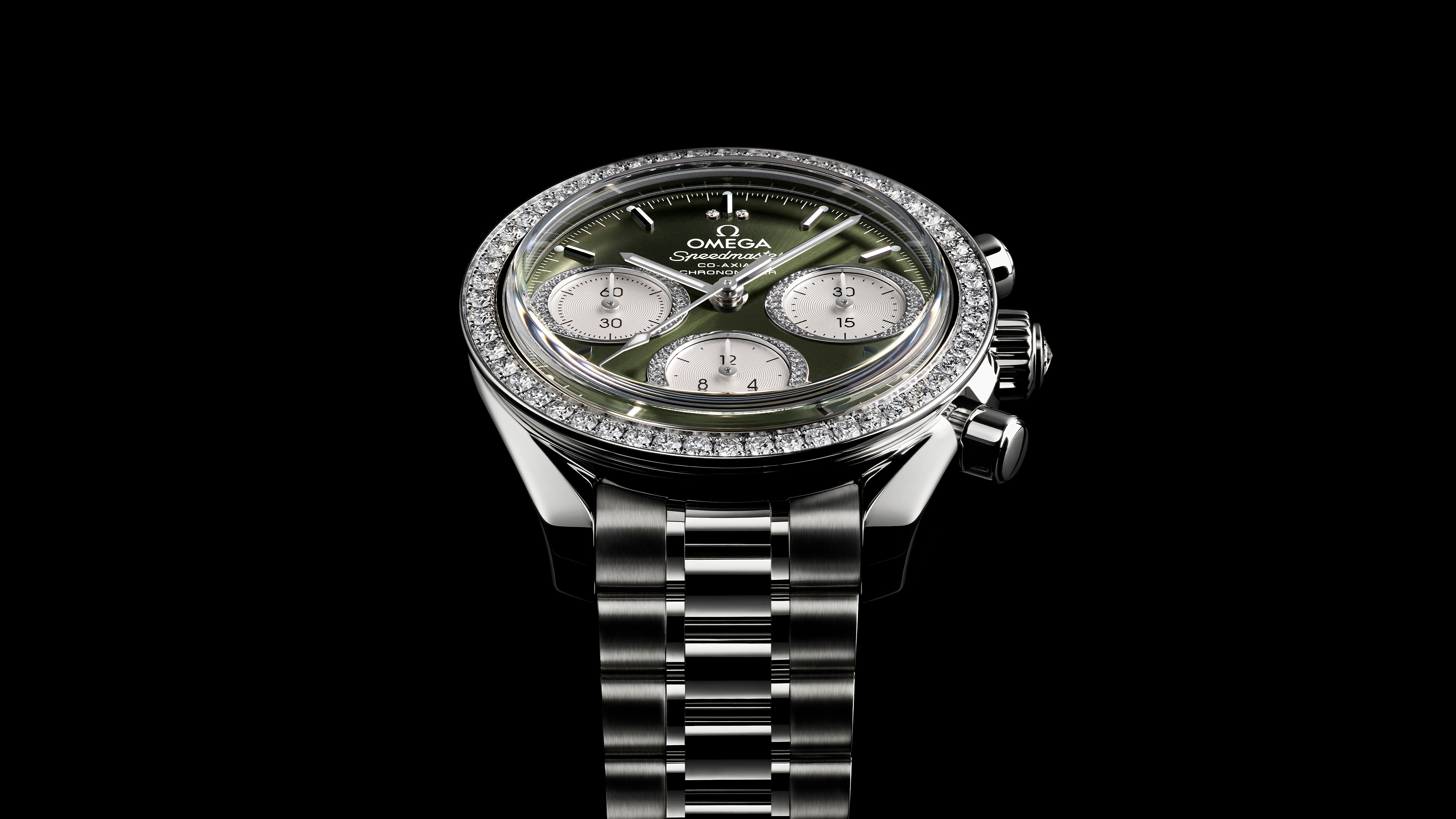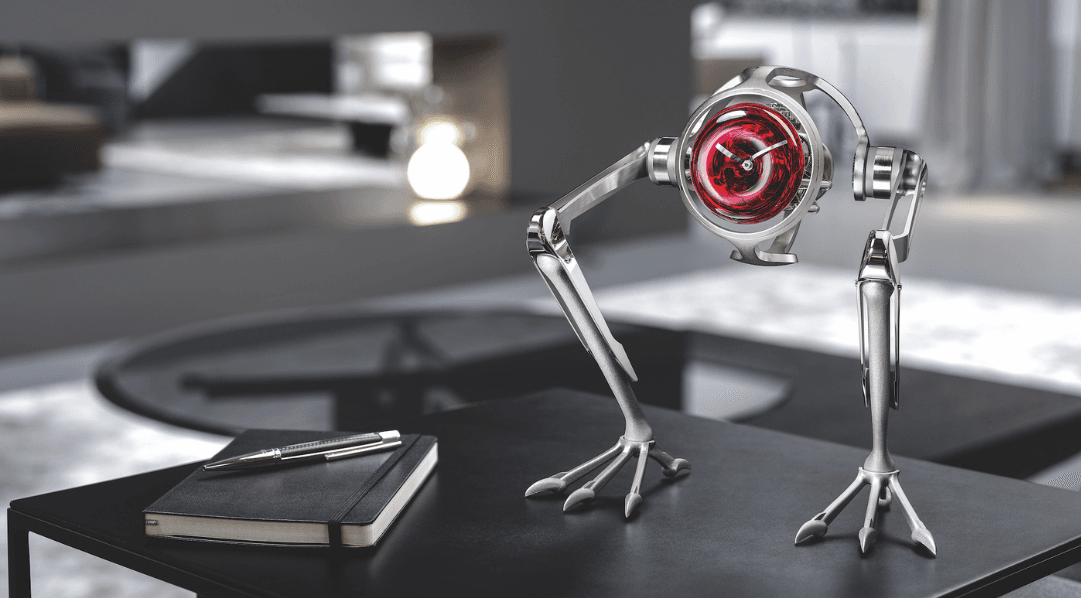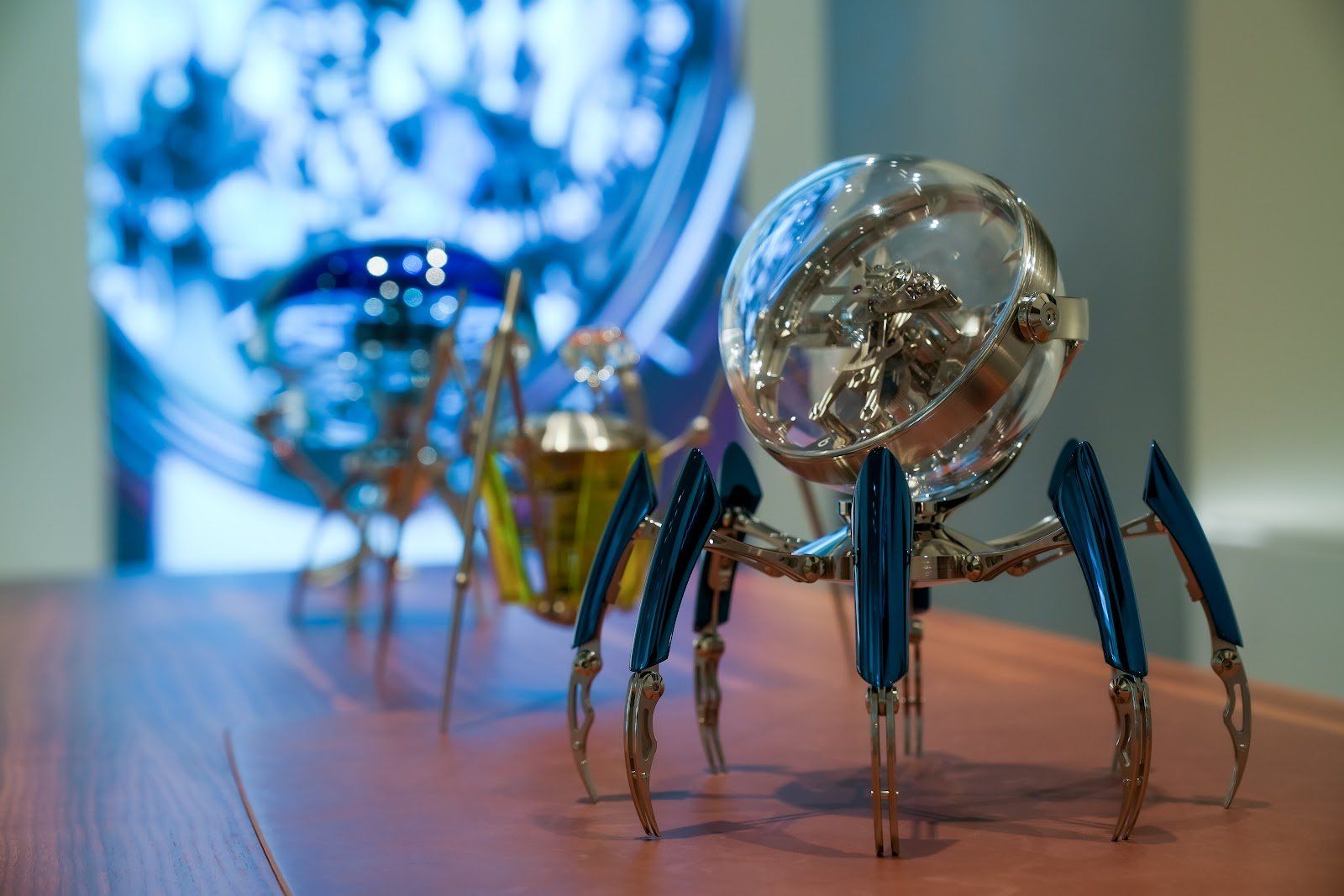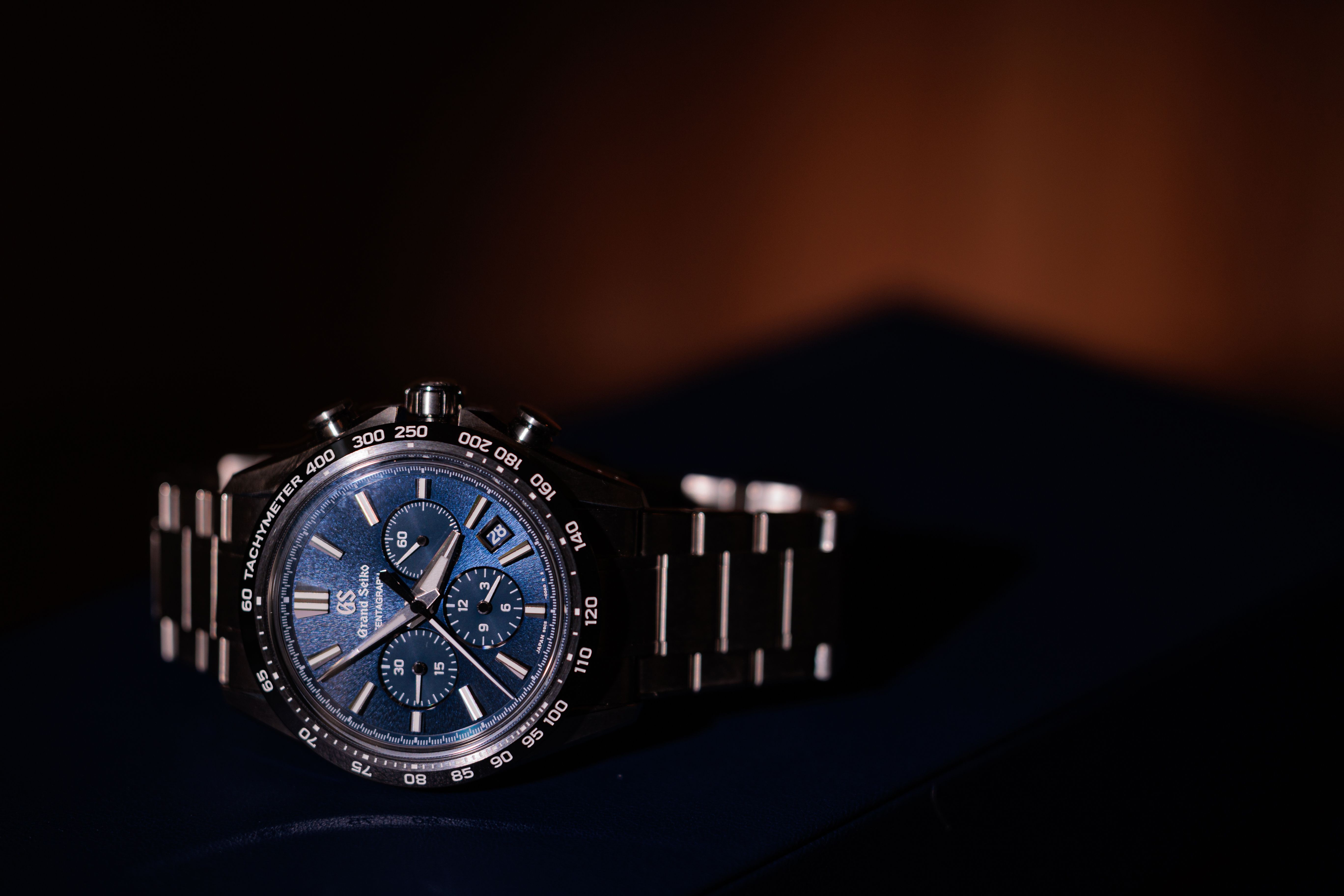The MB&F X L’Epee Tripod: A Strange Animal Joins The Trilogy Of Robocreatures
Susan Vreeland, an American writer, once famously said, "Art begets art." This is especially true of TriPod, the 13th time MB&F has worked with L'Epée 1839, the premier clockmaker in Switzerland.
The minimalist clock face of TriPod hangs between three slender "legs" in the shape of insects. It's the second in a trilogy of MB&F's half-animal, half-robot Robocreatures, following the mighty T-Rex. The mechanical creature known as TriPod gets its name from the three components that make up its design: its three legs, its three insect-eye spheres, and its three-movement levels. Additionally, TriPod is the middle clock in a set of three.
"In the same way that H.R. Giger created his Alien universe, we're creating our own world of creatures. This strange animal wasn’t even my idea," is how MB&F founder Maximilian Büsser describes Robocreatures.
Robocreatures have the potential to serve as time capsules, preserving "life" from the distant past in fossil form. Maximilian Maertens of Berlin, L'Épée CEO Arnaud Nicolas, and Büsser usher us into a horological post-modern prehistoric era with their TriPod.
TriPod has three fine legs that hold up a bright body, three glass spheres that look like insect eyes, and a clock face that rotates once every 36 hours and displays three different time zones. The dial conceals a L'Épée 1839 movement consisting of 182 parts and a vertical balance beating at a more sedate than modern 2.5Hz (18,000vph).
The time and winding are controlled by a key, and the eight-day power reserve is a nice bonus. TriPod's time display relies on a rotating disc dial, which the user must look down at to read. However, in order to read the time on this clock, the observer must engage in a little Man vs. Machine conflict: the clock's three optical spheres serve to magnify the time and make them legible.
Where did the inspiration come from?
Maximilian Maertens, a young designer who interned at MB&F, served as the project's creative incubator. Since Maertens's earliest cinematic memory is of Jurassic Park (1993), it stands to reason that this film had a profound impact on him. It has been a gift that keeps on giving that Maertens' inspiration from his childhood memory was realized in MB&F's T-Rex, the first clock in the Robocreature trilogy. This is fitting since the whole point of these mechanical masterpieces by MB&F is to inspire kids to become artists.
Maertens imagined a backstory for T-Rex to help guide his design process, allowing him to strike a balance between mechanical and organic visual elements. MB&F's previous works featured similar elements, such as a spaceship's pilot coming across uncharted planets. Maertens's love of Jurassic Park sparked the development of a new story that would become the backbone of his Robocreature trilogy.

Although the mosquito preserved in amber was the original inspiration for TriPod, Maertens decided to model the clock after an insect called a water strider (Gerridae) because of its ability to walk on the surface of the water by using surface tension and its long, slender, hydrophobic legs to distribute its weight across a wide area.
“It feels much like a levitating insect walking over the water,” Maertens explains, “and this inspired me to create something that looks very delicate. This is a direction I like to go, even if it caused some strife with the engineers over issues like stability”.
All about the movement
The plated-brass TriPod stands at just 26 centimeters tall, and its 2.8-kilogram mass is evenly distributed across its three finely sculpted legs.
Looking down at the dial, which consists of two concentric, rotating discs, is central to determining the time on TriPod, a sculptural clock. The inner disc shows the minutes in 15-second intervals, while the outer disc shows the time of day. The time is read by the observer through the aid of three optical spheres, which together magnify the clock's numerals and make them legible.
The dial's three sets of numerals 1-12 mean that it takes 36 hours, rather than the usual 12, to make a full rotation, allowing all three "insect eyes" to display the time from any vantage point. At any given moment, you can check the time by looking up at the dial or through one of the magnifying lenses (albeit much smaller).
Arnaud Nicolas, CEO of L’Epée 1839, has a master’s degree in optics, so can well explain how making the mineral glass spheres forming the three insect-eye magnifiers was one of the greatest challenges in creating Maertens’ creative vision. “The precision of the sphere had to be very, very accurate,” he explains. “It’s not at all common for a ball-shaped piece of glass to have the tolerance of an optical lens.”
All about the structure
The designers at L'Epée determined the ideal separation between the dial and the spheres, as well as the optimal size of the spheres so that the time could be read without disrupting the aesthetics of the clock. In other words, TriPod's success was directly related to getting the proportions, magnification, and distances just right. To achieve this, the spheres' shapes had to be manufactured to within 10 microns of perfection, as even the tiniest deviation from perfect alignment would cause the image to blur.
The spheres are held in place by brass "arms" that cup them like hands, taking care not to scratch or mar their smooth surfaces. Nicolas explains that making the cradles for the lens spheres in one piece, as was required to maximize stability, was challenging. The insect's body armor is made from the same cast acrylic used by MB&F and L'Épée 1839 for their three T-Rex iterations, providing the same shock resistance, lightness, and optical clarity.
These transparent shields are available in eye-catching neon green, blue, and red, and they reveal the intricate workings of the clock mechanism. In addition, the Robocreature's movement can be positioned in the center of its body, just like an insect's, so that it can observe its surroundings in all directions. Every view of TriPod reveals the same structure, with the exception of the creature's visible balance. Maertens confirms that "these shells" were influenced by the insect exoskeleton or chitin.
TriPod is driven by a movement developed and manufactured entirely within L'Epée 1839, and it is finished to the highest standards of traditional Swiss clockmaking. This, however, is unlike any of the other movements in L'Épée 1839. It is a table clock with a gear train, mainspring barrel, balance wheel, escape wheel, and pallet lever—basically the same mechanisms as a wristwatch, only bigger. The regulator on the L'Epée 1839 is equipped with an Incabloc shock protection system, normally found only in wristwatches, to lessen the likelihood of damage during transport.
The larger size of the parts might lead one to believe that assembly is easier. However, finishing the movement requires more time than finishing a wristwatch due to the larger surface areas involved.
Nicolas explains: “Doubling the size of the components requires much more than simply doubling the time to finish them; the complexity increases exponentially...”. For polishing, you need to apply the same pressure as you would finishing a watch movement but on a bigger surface, and that’s more challenging. It’s thanks to the experience and dexterity of our clockmakers that TriPod can feature such superlative fine-finishing”.
There are only 50 of each color of TriPod (neon blue, neon green, and neon red) available. A whole new chapter in their Co-creations!
